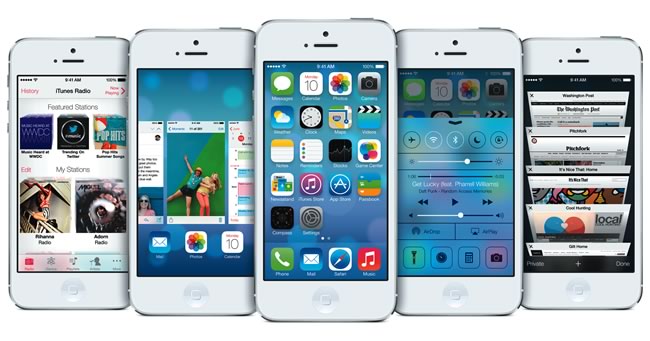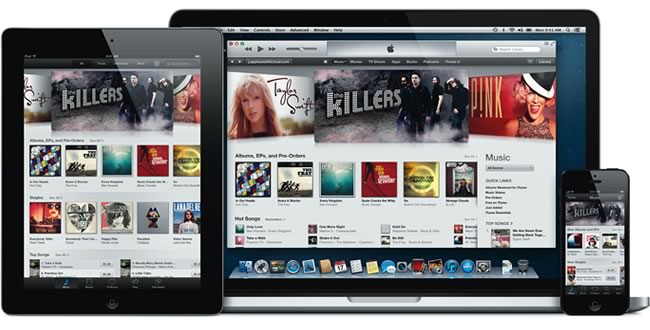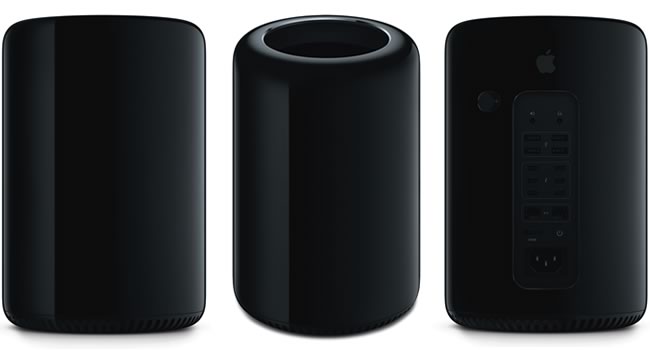Side hustles are no longer optional in South Africa. With food inflation still above 8 percent and electricity, transport and mobile data costs climbing…
The complete WWDC 2013 keynote round-up

Apple’s hotly anticipated four-day WWDC conference kicked off today and we finally got to see what the men and women of Cupertino have been working on since the last major updates of iOS and OS X. It’s an interesting time for the world’s most valuable technology company that has seen its stock price take a beating in the wake of slowing growth, Android’s rise and the lack of an innovative new product that can still the insatiable hunger of Apple fans and investors.
Today, CEO Tim Cook revealed (confirmed) new versions of its desktop and mobile software arsenal, iTunes Radio, iWork for iCloud, as well as hardware in the shape of MacBook Air updates and a sneak peak at the long-neglected Mac Pro.
Cook started off by touting 50-billion app downloads from a catalogue of 900 000 apps — up from 700 000 apps from September 2012 — and that iTunes now plays host to 575-million accounts. US$10-billion has been paid to developers and according to Cook, Apple makes up 74 percent of the total app download revenue across all mobile computing platforms, with 20 percent going to Android developers.
Cook said that the Mac install base was 72 million currently — that’s double what it was five years ago — and that 28 million Mountain Lion copies have been sold since it launched, making it Apple’s best selling OS of all time.

iOS 7
iOS received its biggest UI overall since the original introduction of the mobile OS.
It has a newly designed icon set and colour palette, and to underline its new visual flair, as you tilt the device in your hand, it does motion tracking to create a 3D effect, giving you the illusion of peeking “behind” the icons.
There has been UI updates to Weather, Messages, Calendar, iMessage, Music and Game Center — they all have a new flat, modern look. Apple had “completely ran out of green felt and wood,” quipped Apple’s Craig Federighi.
A new gesture is popping up here and there too. For example, in Messages you can navigate back by swiping from the left edge of the display to the right.
iOS 7 introduces Control Centre, which looks a lot like Android’s settings menu with quick access to commonly used features like screen brightness and Wi-Fi settings. Multitasking received an overhaul which will allow iOS to get closer to the freedom apps have on Android. Despite the perils that this might bring, iOS will attempt to retain “great battery life” by introducing app-use tracking and intelligent scheduling.
AirDrop comes to iOS 7 and will allow you to easily share with other iPhone 5 users. The camera app now has filters and a new square crop option — all hail Instagram — and Siri can now change phone settings, abiding with new, very lifelike voices. Safari has gone full screen and boasts better search for bookmarks and has a new UI for tabs, while Photos uses a new way of grouping pictures by place and time. There’s also new features such as FaceTime Audio and Notification Sync across devices to look forward to.
iOS will be heading to cars. Apple has struck deals with top car makers, including Ferrari to mirror your iPhone on your in-car display. Siri will be at the core of the integration to help you access things like Maps, and messages without having to take your eyes off the wheel. Honda, Mercedes, Nissan, Ferrari, Chevrolet, Kia, Hyundai, Volvo, Jaguar, and a number of other manufacturers are on board — look for it in 2014.
Finally, long-time iOS users will be happy to know that updates in iOS7 will happen automatically in the background.
iOS 7 opens up 1500 new APIs, which ensures the developer community readies their apps before the fall when everyone else will get their hands on version seven. It’s coming iPhone 4 and later, iPad 2 and later, 5th generation iPod touch.
iTunes Radio
iTunes Radio introduced today, has been built into iOS 7 and works like Pandora, using featured stations to listen to. If you like a song you can buy it directly on iTunes.
It’s free with ads or ad-free with an iTunes Match subscription.
Mac OS X 10.9 Mavericks
Apple’s latest Mac operating system does away with the cat monikers.
It features Finder Tabs, which gets rid of having to open multiple Finder windows. Document tags in the Finder sidebar and search bar will help you group and find your documents faster.
Mavericks has better support for multiple displays. You can for example, summon the dock on different displays, swipe through different sets of full screen apps on different displays and mission control can now operate per display separate as well.
Apple introduces “timer coalescing” with Mavericks which, according to Apple, can reduce battery power up to 72%. Apple also claims that its new “compressed memory” feature will open apps 1.4 times faster on average, and wake up your Mac in a more timely fashion (approximately 1.5 times faster).
Safari features a new home screen with your most frequented sites and boasts a new sidebar with your bookmarks and shared links thanks to Twitter integration. Apple also touts Safari’s improved Javascript performance which outdoes all others — naturally.
Arguably Maverick’s most interesting feature is its “app nap” function, which — reduces CPU usage when an app window that is idling (think iTunes, for example) is stacked on top of a window performing a CPU intensive task like a 3D visualisation.
Apple introduced iCloud Keychain which works across Mavericks and iOS 7 to create difficult to crack passwords on the fly and stores them, together with your credit card details for quick payments, in the cloud. Think LastPass or 1Password.
Updates to the way notifications work mean you can sync notifications on your iOS and OS X devices, and you can respond to them right from the popups — interactively reply to or delete a message.
Calendar on Mavericks share the flatter more modern look of iOS 7 — bye-bye skeuomorphism — and with the addition of Maps, Mavericks users can map out and can send route directions directly to their iPhone.
Oh yes, and iBooks with a clean minimalist design is coming to OS X.
iWork for iCloud
Apple took on Google Docs today when it announced that OS X and iOS users will be able to create and edit Pages, Numbers, and Keynote documents inside their desktop and iOS browsers. It supports Safari, Chrome, and Internet Explorer. The web-based app suite is capable of handling Microsoft Office documents, and will be available to developers from today. The service will launch publicly later this year.
MacBook Air
The new MacBook Air has 802.11ac Wi-Fi, 40% faster graphics and since its based on Intel’s latest Haswell chipset, it boasts “all day battery life”. The 11-inch version will theoretically get you nine hours, while the 13-inch will get you an astonishing 12 hours.
The 11-inch MacBook Air starts at US$999 and the 13-inch at US$1,099.
They ship today.
AirPort and Time Capsule
Apple announced new smaller versions of its AirPort base stations with a 4-inch by 6-inch footprint. The routers will sport the new 802.11ac standard for up to 40 percent faster transmissions at the same distance.
New Time Capsules — 2TB and 3TB — were also announced.
Mac Pro
Apple teased a new version of the long neglected Mac Pro. It’s about one eighth the size of the previous version, it supports ECC RAM, ThunderBolt 2 and it runs on AMD CPUs.
The new Mac Pro will support 4k displays and will have 4 USB 3 ports and 6 Thunderbolt ports.
Apple calls it “the future of the Pro desktop.” It is coming later this year. It is designed in California, and assembled in the US.




